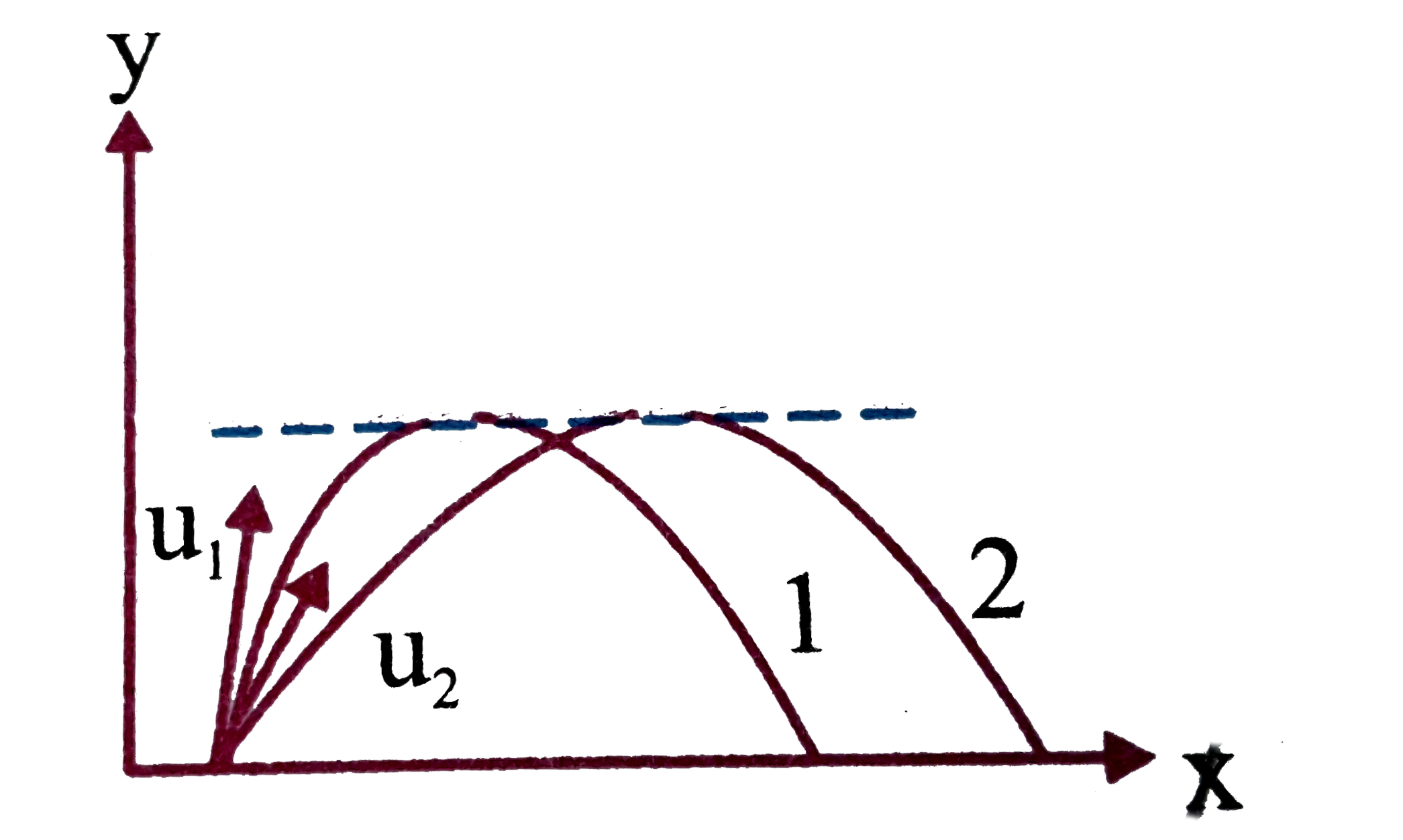Trajectories of two projectiles are shown in figure.Let T1 and T2 be the time periods and u1 and u2 their speeds of projection.Then

T2>T1
T1=T2
u1>u2
u1<u2
The correct Answer is:D
Maximum height and time of height depends upon the vertical component of initial velocity.
H1>H2⇒uy1>uy2
Range R2>R1
So, u2>u1
Similar Questions
[" A body is projected up "],[" with a velocity 'u'.It "],[" reaches a point 'p' its path "],[" at times t "_(1)" and "t_(2)" seconds "],[" from the time of "],[" projection.Then "(t_(1)+t_(2))" is "]
View SolutionTrajectories of two projectiles are shown in the figure. Let T1 and T2 be the time period and u1 & u2 speeds of projection. Then

View SolutionTwo particles are projected simultaneously in the same vertical plane from the same point, with different speeds u1 and u2, making angles θ1 and θ2 respectively with the horizontal, such that u1cosθ1=u2cosθ2. The path followed by one, as seen by the other (as long as both are in flight), is
View SolutionSpeed of light through two media of refractive indices μ1 and μ2 are u1 and u2 respectively, then
View SolutionA projectile has same range R for the two angles of projection. If T_(1) and T_(2) are the times of flight in two cases, then:
View SolutionIf T1,T2 and T3 are the temperatures at which the urms,uaverage,ump of oxygen gas are all equal to 1500 m/s then the correct statement is :
View SolutionTwo projectiles are thrown same speed in such a way that their ranges are equal. If the time of flights for the two projectiles are t1 and t2 the value of 't1t2' in terms of range 'R' and 'g' is
View SolutionTwo projectiles are thrown same speed in such a way that their ranges are equal. If the time of flights for the two projectiles are t_(1) and t_(2) the value of 't_(1)t_(2)' in terms of range 'R' and 'g' is
View Solution
